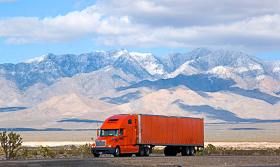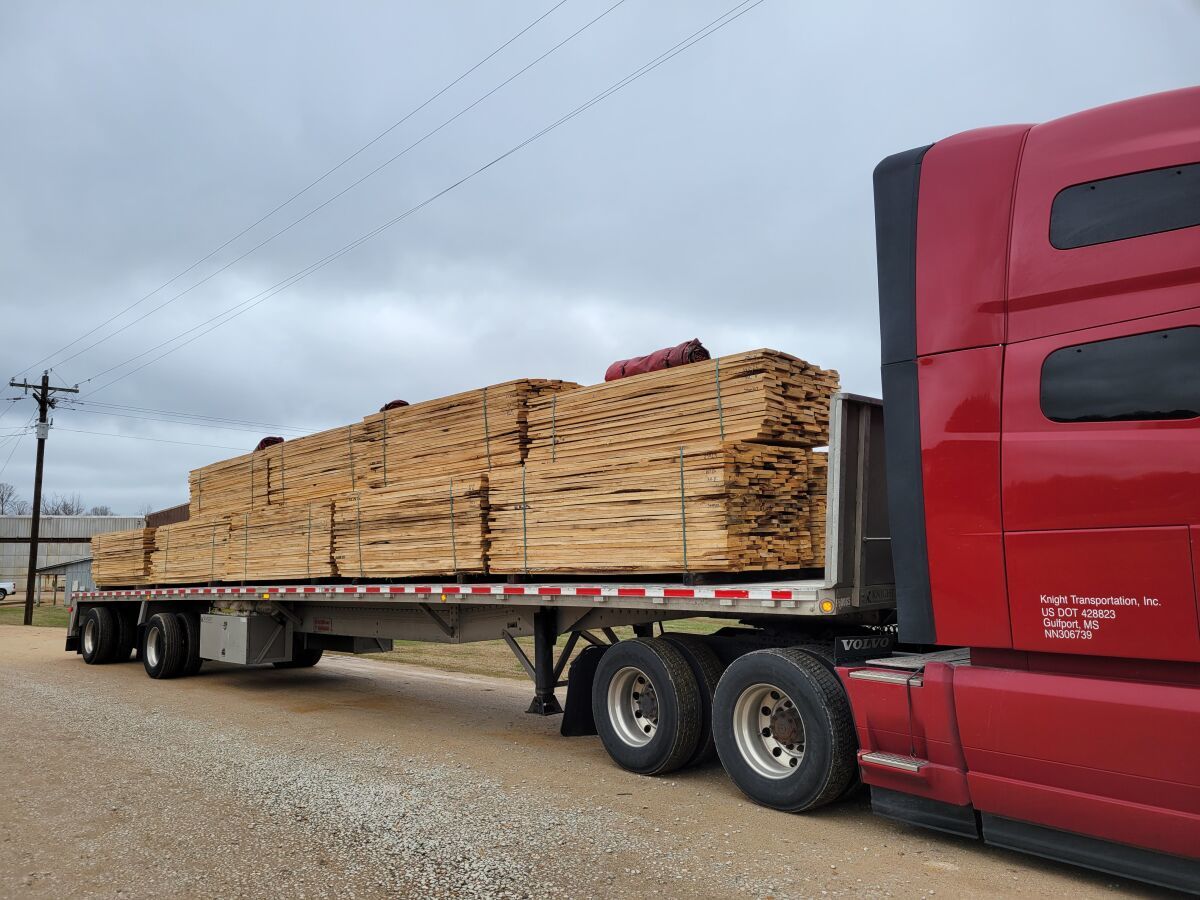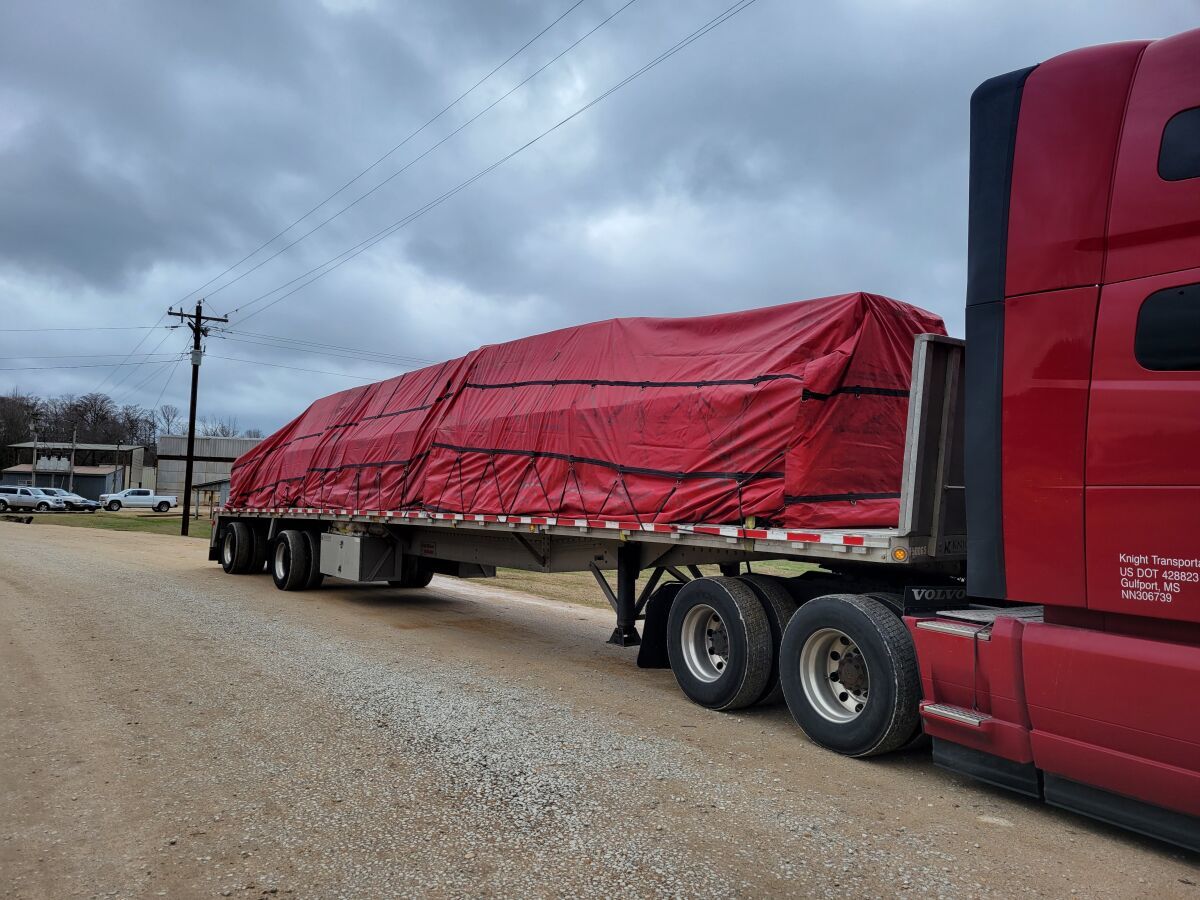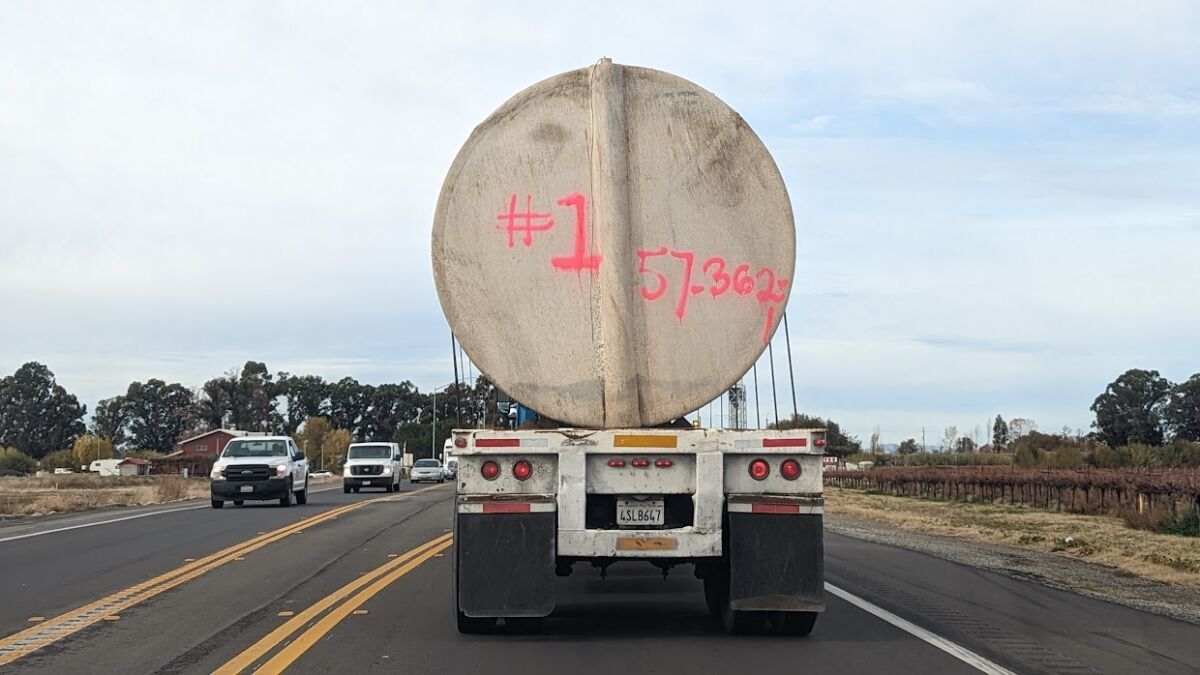Flatbed Variety
Topic 4373 | Page 136

When driving back from a doctor appointment the other day I saw this flatbed load that I thought was a potential problem. This fuel tank is loaded off-center of the trailer, I'd guess about 10" to the left. I was looking at it from a distance but then right behind it when stopped at a signal light so I took this photo. I have no idea on the weight of a large fuel tank but it seems like a top-heavy load to begin with and when being loaded off-center I wondered if it was a risk of flipping the trailer if the truck made a moderately sharp right turn. At first I thought a chock in the back on left had slipped out of place but when close I saw there was a block between it and the tank. What are your thoughts?
You can view a higher resolution photo at https://photos.app.goo.gl/xEFigFhXLjfeHk6YA
Never done flatbed, but something about this just doesn't jive right. There have to be other securement options to prevent rolling. I just don't see that securement preventing that tank from rolling one way or another, like a sustained sharp curve.
If I am wrong, please advise how this securement is satisfactory against what seems to be common sense to me.
When driving back from a doctor appointment the other day I saw this flatbed load that I thought was a potential problem. This fuel tank is loaded off-center of the trailer, I'd guess about 10" to the left. I was looking at it from a distance but then right behind it when stopped at a signal light so I took this photo. I have no idea on the weight of a large fuel tank but it seems like a top-heavy load to begin with and when being loaded off-center I wondered if it was a risk of flipping the trailer if the truck made a moderately sharp right turn. At first I thought a chock in the back on left had slipped out of place but when close I saw there was a block between it and the tank. What are your thoughts?
You can view a higher resolution photo at https://photos.app.goo.gl/xEFigFhXLjfeHk6YA
Never done flatbed, but something about this just doesn't jive right. There have to be other securement options to prevent rolling. I just don't see that securement preventing that tank from rolling one way or another, like a sustained sharp curve.
If I am wrong, please advise how this securement is satisfactory against what seems to be common sense to me.
It had several chocks on each side of the tank but I thought they sure seemed small for this large of a diameter of a tank. The one in the back left had a block between it and the chock, not sure why the chock wasn't up against the tank.
I was less than a mile from home but wondered if this was a hazard that should be called in. I did not hear of any accidents over the next hour and the next 8 miles was a curvy levee road.
I could be wrong but if I remember correctly from when I hauled paper rolls on flatbed this is exactly how they were secured. The straps are the main thing securing it and the blocks just help keep it from moving around
My concern with this was that it was loaded about 12 inches off center with the tank being a few inches beyond the left side of the trailer. I thought it was odd also that the left rear triangular chock was not up against tank but had something like a 4x6 block between it and the tank. It made me curious how chocks are secured to the trailer.
The only reason I could think of why this might have been done purposely is if he needed the additional clearance on the right side somewhere on his route, but that seemed unlikely.
Flatbed trailers typically have 2-4 boards running the length of the trailer to which the chocks can be nailed for this type of securement. Additionally, there is the possibility of using coil racks, which are steel gadgets that rest on the deck from one side of the coil, or tank in this case, to the other. The chocks fit inside the racks, preventing them from moving outward. In this case, I wouldn't worry so much about the chocks, they are probably fine.
That leaves the issue of the tank being slightly off center. And it comes down to this:
You don't know what you don't know.
-Maybe the load shifted at some point, and now he has to limp it the rest of the way.
-Maybe he purposely loaded it off center to counterbalance the natural slope to the right in the roadway.
-Maybe he has an issue with the trailer, and has to favor one side.
Maybe his co-driver is a big'un, so he has to counterbalance that.
Or maybe he just simply didn't care enough to shift it over a few more inches.
Who knows? I sure don't, so I can't judge. What I can see is that with chocks in place, that load is secure. And I see at least seven straps holding it down, which means he can legally secure a load weighing 75,600 lbs. And I doubt that tank weighs even a third of that.
Thank you for the detailed explanation, Turtle. I like the phrase about not knowing what we don't know, I use it and a lot of people seem confused by it. Rumsfeld wasn't treated fairly by the media, IMO: https://youtu.be/REWeBzGuzCc
The highway up ahead has curves in both directions for 8 miles, fairly flat. It is a levee also which protects our farmlands from flooding. The road is much safer than it was prior to the upgrade around 1994-1995.
If you will tolerate my curiosity a bit more - is a load that sticks over the side of a trailer required to be flagged and have wide load placards? I see those often around here with farm equipment, construction equipment, petroleum drilling equipment.
HOS:
Hours Of Service
HOS refers to the logbook hours of service regulations.OWI:
Operating While Intoxicated
I picked up 10,581 board feet of rough sawn white oak lumber today. I sure wanted to take a little home with me.

Here's what it looked like after I wrapped it all up.

I have a question for you flat bedders, last week we had some high winds with gusts of 45 mph+ and rain . There was a flat bed pulled over because the shrink wrap had come off one of the boats he was carrying, what remained was flying in the wind like superman's cape most of the wrap had gone and he was standing on the trailer trying to reel in what remained.
I would estimate that around half maybe a bit more of the boat was now uncovered, what do you do in this situation? Do you just continue on? It was a boat so a little water shouldn't hurt it however its worth more than 100k so is it worth the risk? do you try and rewrap it in 45 mph winds and rain? I doubt you'd be able to get it as tight as the factory so it would probably just come off again anyway. I do not think you could tarp it without risking scratching it plus it had a tower on it for pulling skiers.
Just was wondering these are problems I don't have with a box.
Bobcat Bob,
Back when I hauled boats, I considered their shrink-wrap to be part of their securement not mine. Same thing with the Tyvek wrapping around the lumber. I learned that in most circumstances they wanted us to tarp the Tyvek wrapped Lumber to preserve the Tyvek bag. But if we weren't required to tarp it and the Tyvek bag ripped apart, not my problem.
I would not try to tarp one of the boats, because they are very particular about the boats. When I delivered the boats, they would usually take 45 minutes to an hour to inspect it for all the parts that were inside the boat plus any scratches. Any little scratch they would note.
New Reply:
New! Check out our help videos for a better understanding of our forum features

















Preview:
This topic has the following tags:
Advice For New Truck Drivers Choosing A Trucking Company Flatbed Hard Lessons Learned Load Securement Photos Truck Driving Stories








 TT On Facebook
TT On Facebook
This truck was pulling flatbed. Huff and Puff must refer to the securement and tarping work. Amusing.